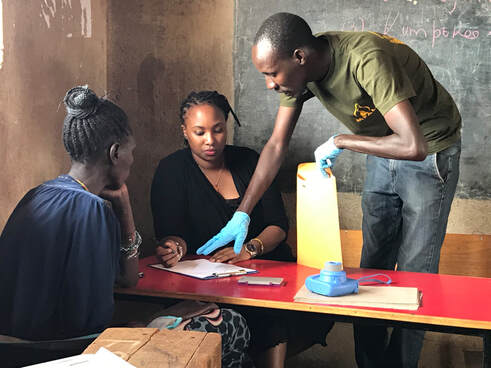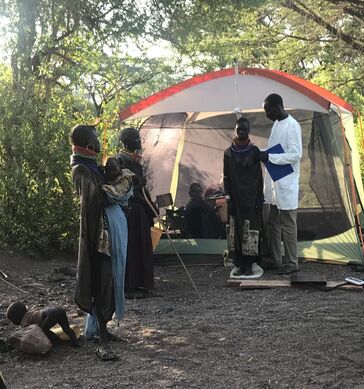Our research questions
Our project centers on three questions about human evolution, genetics, and health:
(i) how has a traditional pastoralist population adapted (at the genetic level) to a high-protein diet and an extreme desert lifestyle?
(ii) what happens when individuals from this remote, rural desert move to cities?
(iii) which individuals are most vulnerable to health problems during these urban transitions?
(i) how has a traditional pastoralist population adapted (at the genetic level) to a high-protein diet and an extreme desert lifestyle?
(ii) what happens when individuals from this remote, rural desert move to cities?
(iii) which individuals are most vulnerable to health problems during these urban transitions?
Understanding the genetics of adaptation
Patterns of human genetic and phenotypic diversity have clearly been shaped by natural selection, including through local adaptation to diverse diets, climates, and pathogens. Yet, despite intense research, few well-understood examples of genetic adaptations and their phenotypic consequences exist, limiting our knowledge of how genetic variation arises and gives rise to complex traits in our species.
The Turkana inhabit one of the most arid landscapes in East Africa and subsist on an extremely high protein diet. Consequently, they provide a unique opportunity to understand local adaptation to a desert pastoral lifestyle, a question we are tackling using whole genome sequencing. Specifically, we have compiled a dataset of over 300 Turkana whole genome sequences, which we are using to identify regions of the genome that show signatures of natural selection. Our preliminary results suggest that genes involved in water balance (e.g., sodium reabsorption and kidney osmoregulation) have been under positive selection in the Turkana. Currently, we are working to link genotype and phenotype (e.g., measures of kidney function) at these putatively adaptive loci.
This work is conducted in collaboration with Sarah Mathew, Anne Stone, Melissa Wilson, Carla Handley, Tanya Phung, Angela Taravella, and Rebecca Siford at Arizona State University.
The Turkana inhabit one of the most arid landscapes in East Africa and subsist on an extremely high protein diet. Consequently, they provide a unique opportunity to understand local adaptation to a desert pastoral lifestyle, a question we are tackling using whole genome sequencing. Specifically, we have compiled a dataset of over 300 Turkana whole genome sequences, which we are using to identify regions of the genome that show signatures of natural selection. Our preliminary results suggest that genes involved in water balance (e.g., sodium reabsorption and kidney osmoregulation) have been under positive selection in the Turkana. Currently, we are working to link genotype and phenotype (e.g., measures of kidney function) at these putatively adaptive loci.
This work is conducted in collaboration with Sarah Mathew, Anne Stone, Melissa Wilson, Carla Handley, Tanya Phung, Angela Taravella, and Rebecca Siford at Arizona State University.
Testing the evolutionary mismatch theory of disease
|
The environments experienced by individuals in Western, industrialized societies are deeply diverged from the ancestral selection pressures that have shaped our genomes through evolutionary time. Consequently, many have hypothesized that this “mismatch” —between our evolved traits and modern life—is responsible for the high rates of non-communicable diseases, especially cardio-metabolic diseases, observed in industrialized societies relative to developing nations and subsistence-level groups. However, this idea has been difficult to test in practice, as it requires (i) identifying a human population locally adapted to subsistence-level practices and (ii) contrasting health among individuals exposed to the “ancestral” selective regime versus an industrialized lifestyle.
|
|
Because of the Turkana's unique evolutionary history and current migration patterns, they provide an incredible opportunity to test the evolutionary mismatch hypothesis. In particular, we are collecting individual-based interview and biomedical health data across a dramatic lifestyle gradient: we work with traditional pastoralists in northwest Kenya, urbanities in central Kenyan cities, and Turkana practicing many lifeways in between these extremes. Leveraging this variation, we have shown that Turkana individuals who experience strong "evolutionary mismatch" and live highly urban, modern lifestyles exhibit the worst cardio-metabolic health (e.g., high BMI, blood pressure, and body fat levels relative to non urban Turkana).
This work is conducted in collaboration with Mike Gurven at University of California: Santa Barbara. |

